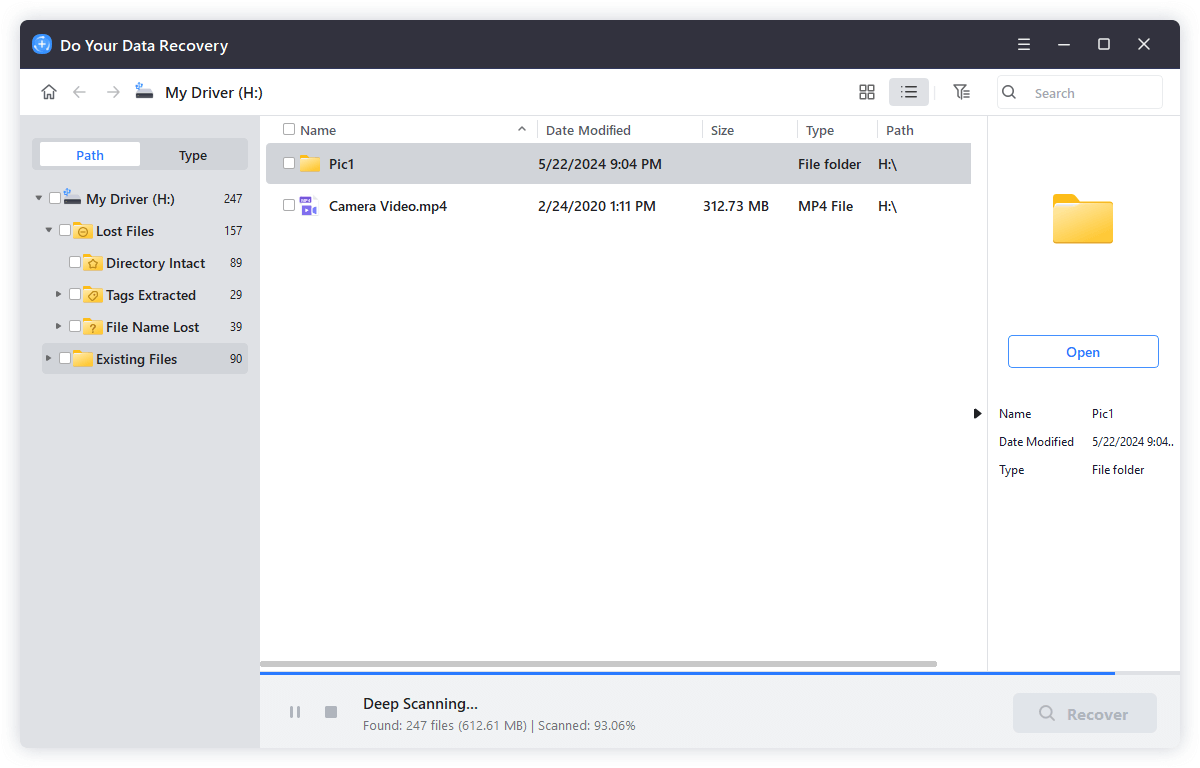Quick Navigation:
- Formatted Memory Card Data Recovery Situations
- Unformat Memory Card with Data Recovery Software
- FAQs About Format and Unformat Memory Card
- Conclusion
Imagine that you just returned from a once-in-a-lifetime trip filled with breathtaking views and priceless memories you recorded on your camera's memory card. When you connect the card to your computer, you realize you've accidentally formatted it, erasing all your important memories.
It starts to feel scary, but don't give up hope before you give up. You have arrived at the world of unformatting memory cards, where you can restore lost data and retrieve treasured memories. You can recover your essential files from a formatted memory card using data recovery method, which we will discuss in this guide. Hold on tight as we figure out the mysteries of data recovery and start our journey to get back what's yours.

Formatted Memory Card Data Recovery Situations
- When I connect the memory card to my computer, it says "The memory card is not formatted, do you want to format it now" or "The memory card is not initialized, do you want to initialize it."
- I can't open my memory card, I can't access to my data.
- The memory card is formatted by mistake.
- My memory card has been infected by virus, all the files become shortcuts.
- Can I recover data from a memory card which was formatted a few months ago?
- I have formatted the memory card again and again about 5 times, can I recover my data from it?
- I used a third-party program to format my memory card, can I recover lost data from it after that?
Unformat Memory Card with Data Recovery Software
After the memory card is formatted, the erased data is not lost forever. The file system deletes the entry of the data and make the disk space of the erased data be available for new data. Before it is completely overwritten by new data, you can easily get the erased or lost data back.
Data recovery software is able to unformat a memory card and recover all lost data from it. Do Your Data Recovery, one of the best data recovery programs, offers easy and complete solution for data recovery from formatted memory card. It supports to recover all types of files including emails, photos, documents, videos, audio files, archives etc. When you have formatted your memory card, just immediately download this formatted memory card data recovery software and install it on your computer.
Do Your Data Recovery
- Unformat memory card and recover all lost files.
- Export data from corrupted or inaccessible memory card to your computer.
- Recover permanently deleted images, videos and files from the memory card.
Now, follow the steps below to recover lost data from a formatted memory card:
Step 1. Download and install the memory card unformat software - Do Your Data Recovery, then run this software, select the formatted memory card to start data recovery.

Step 2. Click on Scan button to deeply scan the formatted memory card and find all recoverable files.

Step 3. Once the scan is completed, preview all recoverable files. Then select the wanted files, click on Recover button, choose a location to save these files.

FAQs About Format and Unformat Memory Card
1. How to format a memory card on Windows PC?
Here are two methods to help you format memory card or fix corrupted memory card:
Method 1: Format SD Card on Windows Using File Explorer
It's easy to reformat an SD card on Windows using File Explorer. All you have to do is follow a few simple steps. This complete guide will help you through the whole process, whether you want to clear the card to use it again or fix a problem:
- First, put the SD card into the card reader slot on your computer. If you need to, you can use an external card reader.
- Search for an SD card under "Devices and drives" in "This PC" or "My Computer" on your screen. The card's name or the drive letter assigned to it will generally be written on it.
- Right-click on its icon to bring up a choice.
- Press the "Format" button on the menu. It will bring up the Format dialogue box, where you can change the formatting choices.
- In the Format text box, you can pick the file system (most often FAT32 or exFAT) and the size of the allocation unit. If you don't have any unique needs, you can leave the allocation unit size at its default value.
- You can check the "Quick Format" box to speed up the process if you're in a hurry or have a big SD card. But remember that a quick format doesn't wholly delete data, so you might still be able to get back private data.
- After making the choices for formatting the way you want them, click the "Start" button to start the formatting process.
- According to a message, formatting the SD card will eliminate all its information. Click "OK" to ensure you want to proceed with the plan.
- When the editing is done, you'll receive a message letting you know. Once you click "OK" to close the box, remove the SD card from the computer.
Method 2: Format SD Card on Windows Using Disk Management
Reformatting an SD card on Windows using Disk Management is a more complete way to handle storage media. Here is a step-by-step guide on how to quickly format your SD card:
- Insert The SD Card: Put the SD card into your computer's slot. If necessary, you can use an external card reader.
- Startup Disk Management: To get to the Power User menu, press the Windows key plus X. From there, choose "Disk Management" from the list. Use the Windows search bar to look for "Disk Management" and click on the result.
- Find The SD Card: Your SD card will be on the list of all the connected storage devices in the Disk Management window. Look through the list of files for the SD card. It will usually have its name or the drive letter that was put on it written on it.
- Click And Hold On The SD Card: Once you find the SD card's partition or disk in the lower part of the Disk Management window, right-click on it.
- Pick A Format: When the context menu appears, choose "Format" from the list of options. The Format text box will then appear. It is where you can set the SD card's formatting options.
- Set Up Options For Formatting: In the Format text box, you can choose the file system (like FAT32 or exFAT) and allocate the SD card's unit size. If you don't have any unique needs, you can leave the allocation unit size at its default value. Click "OK" to start the formatting process.
- Check The Formatting: A message will tell you that formatting the SD card will delete the data. If you want to proceed with the layout, click "OK" to confirm.
- Eject SD Card: After the formatting, you'll get a message letting you know. Eject the memory card from your computer after you click "OK" to close the box.
2. How to unformat a memory card?
Data recovery software, such as Do Your Data Recovery can help you recover formatted memory card on Windows or macOS:
- Download and install Do Your Data Recovery, open it.
- Select the formatted memory card.
- Click on Scan button.
- Preview and recover lost files.
3. What is the best memory card unformat software?
Here is the list of top 5 memory card unformat software:
- Do Your Data Recovery
- PhotoRec
- Donemax Data Recovery
- Magoshare Data Recovery
- Stellar Data Recovery
4. How to prevent formatted data on memory card from being recovered by data recovery software?
Before you sell, donate or dispose an old memory card, you can use a data erasure tool, such as DoYourData Super Eraser to wipe the memory card and delete all data permanently, make files unrecoverable.
Conclusion:
Fitting a memory card by accident can be upsetting, but it's not the end of the world. With the right tools and know-how, you can regain lost data and peace of mind. If you want to restore your data, you can use software and command-line tools or get help from a professional. Also, ensure you don't lose any data again by regularly backing up your files and being careful when formatting storage devices.